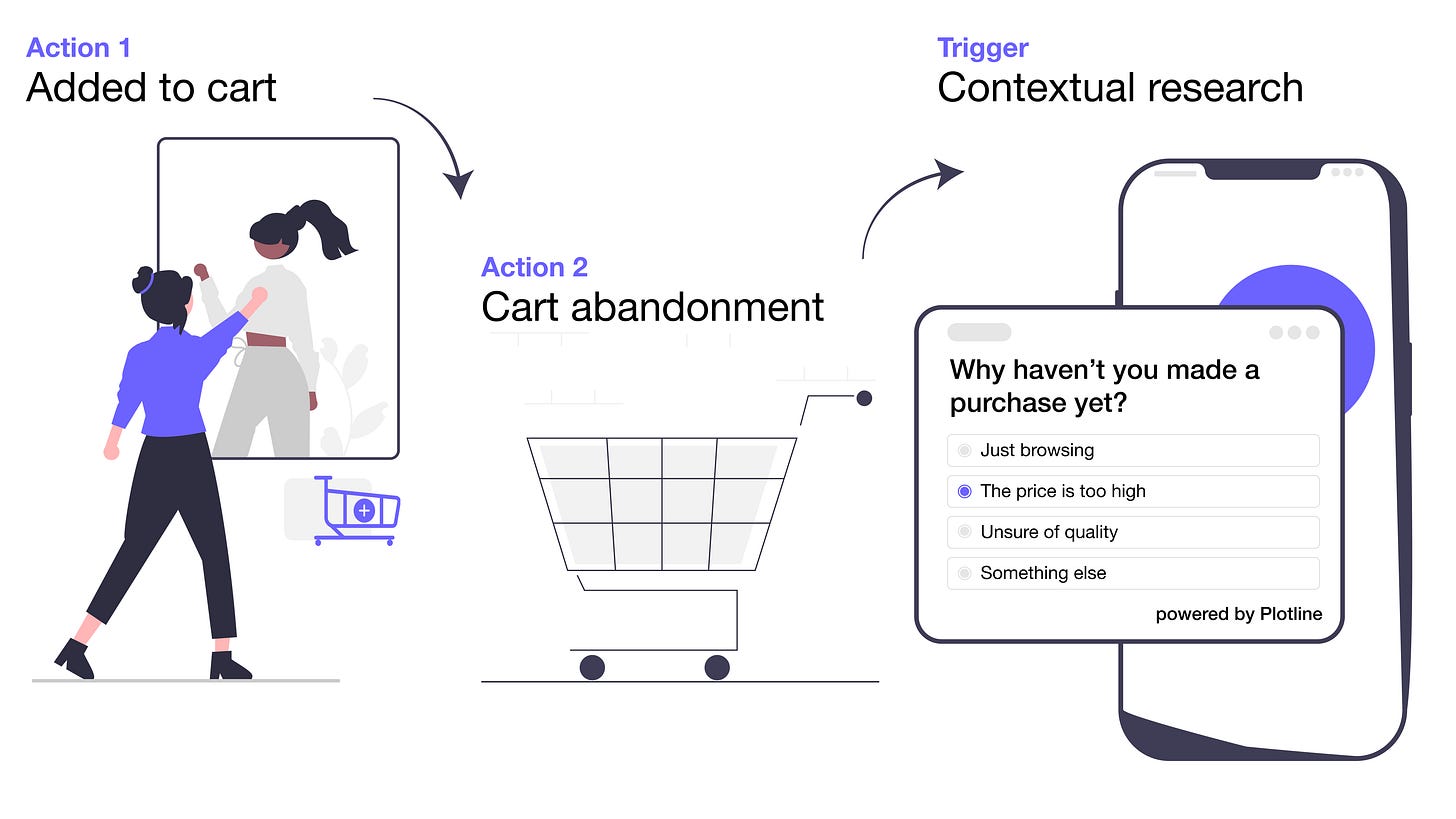Product-led research is the foundation for modern tech companies. Here’s why.
While the product is the centrepiece of most tech companies, user research often gets left behind.
Up until six months ago, Adarsh and I led the tech and business teams at HyperVerge, enabling B2C companies to build fantastic onboarding experiences. Having worked with product teams across the spectrum, we started noticing a common pattern.
Product teams understand the importance of user research but do not have time to conduct it.
“It’s impossible to do user research for many changes that we push out, I wish we could do that.”
“PMs want quick TAT on user research, we do not have the luxury for a long research study before taking decisions.”
After shipping new products or features, product teams regularly came across concerns and problems such as:
Initial assumptions about the user were completely or partially wrong;
The final product is not user-friendly;
Product features are confusing for the end user;
The product has great features that no one uses or wants
The cost of fixing something after development is 100x that of fixing it before development. Plus, investing in user research during a project’s concept phase reduces time spent on development cycles by 33 to 50%.
It became apparent that decisions taken without the right user research caused failed products and features, wasted efforts across functions, and led to the user’s needs remaining unfulfilled. We decided to address this gap.
The right user insights are a competitive edge.
At a time when building software has become commonplace, and every company is vying for their audience’s attention, companies who understand their users better than the competition end up winning market share.
Quibi, the mobile-only streaming service raised ~$1.8 billion but shut down only seven months after launch. One of the reasons for their downfall was a lack of user understanding. While the number of people who watch content on their smartphones is massive, Quibi was only able to acquire about 72,000 paying customers.
Users were unwilling to switch from YouTube/Tiktok where they could watch videos and get entertained for free. The market’s need for Quibi’s solution wasn’t strong enough.
Product managers and user researchers gather such critical insights regularly to plan their roadmap and sprints. Essentially, they:
Analyze quantitative data to understand problems in the user journey
Collect qualitative feedback on these problems and any newly launched features
Discover top issues and opportunities from the above steps and take action
However, decisions are made every day without the right user insights.
The user research process itself is slow and painful.
Recruiting the right users is challenging. We saw product managers reach out to users over phone/email. Even if large teams had a product ops team to schedule these calls, the show-up rate on these calls was less than 20%.
Users are out-of-context. On these calls, users do not remember what they were trying to do in the app. Deriving insights is much harder.
Insights are anecdotal. Email surveys have 2-4% response rates, and a product team can only speak to a handful of users on the call. It is impossible to make essential product decisions by speaking with five users.
In the absence of critical insights, decisions are often based on gut instinct and inherent biases.
Key product metrics don’t move as predicted.
Product and feature launches fail to get results. Product usage is anaemic. Drop-offs don’t reduce. And churn remains as high as ever. Even a couple of failed feature launches can drastically impact a company’s trajectory for the worse.
Back in 2011, when Netflix offered DVD rentals and was 3 years into experimenting with on-demand streaming, CEO Reed Hastings announced that Netflix would splinter its DVD and streaming subscriptions - which meant two separate websites and accounts for users. Users would need to pay for two packages, which amounted to a ~60% price hike.
In the following months, Netflix lost 800,000 US subscribers and more than half its stock price and rolled back all plans for Qwikster.
Engineering bandwidth is deployed on the wrong solutions. Not just engineering but tens of thousands of hours of design and marketing (and even sales for B2B companies) can end up as a sheer waste trying to market and sell features and products that don’t fit the user’s needs.
There is a better way. Companies like Google have already adopted product-led research.
Ever see how giants like Google get information from you, the user, in context? These contextual micro-surveys are not sent out to everyone. They are triggered to a small cohort of users during their product journey based on their activity in the app.
Why do this?
In-context feedback from the user. By asking questions within the user journey, Google can capture highly contextual feedback as the user is experiencing the product.
Right insights from the right users. Questions are highly tailored based on events triggered by the user in the product. This makes the whole experience relevant to their journey and gets you insights from the right cohort of users.
Higher confidence in the feedback. In-app surveys yield higher than 30% response rates, compared to the negligible 2-4% response rates received on email surveys. This leads to statistically significant insights collected across a broad group of users, eliminating biases.
While the biggest companies, like Google and Facebook, can afford to dedicate this bandwidth to build out this in-house solution, most companies have their own product to look after.
Enter Plotline. We’re bringing a continuous research culture to modern tech companies.
Today, we’re building a product-led user research platform that allows product teams to conduct user research faster, so they can prioritize their roadmap the right way. With Plotline, product teams can
Launch contextual micro-surveys to specific user segments based on their activity within the app; and
Continuously monitor user experience metrics across essential product journeys
All this, with absolutely no dependence on the engineering team.
Plotline is on a mission to help companies build better products.
As all product teams know, understanding your users is the first step to building lasting products. Conducting efficient and tactical user research is how we’re getting started. There’s more to this story.
While speaking with product leaders across the globe, we realized there is benefit in sharing our learnings along the way, hoping that it helps the broader community.
To that end, we’re launching our newsletter “One Step Ahead”, covering how the best tech companies are building and growing phenomenal products - and staying one step ahead of the curve. We’re super excited to be on this journey and hope you’ll join in for the ride.
See you in a week.









